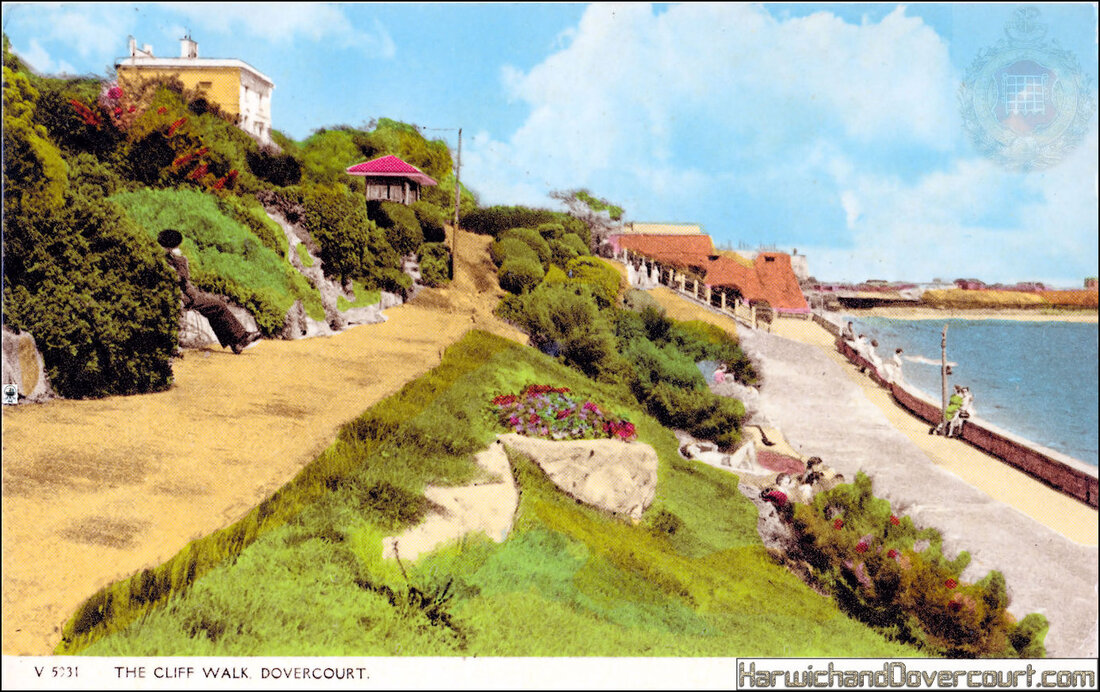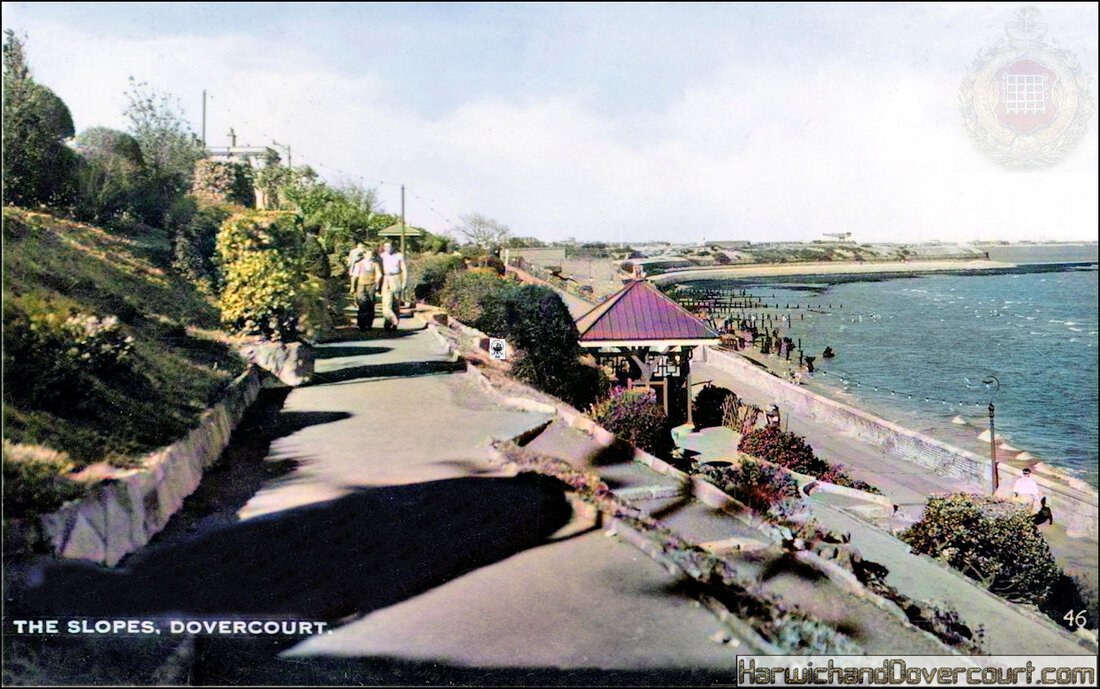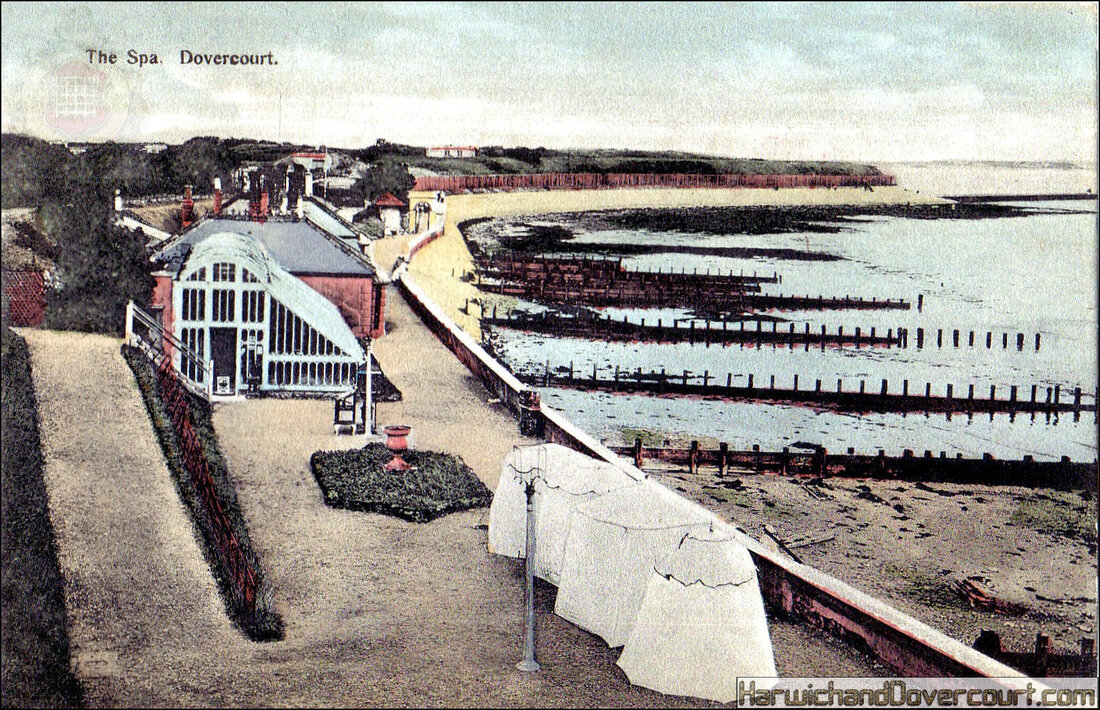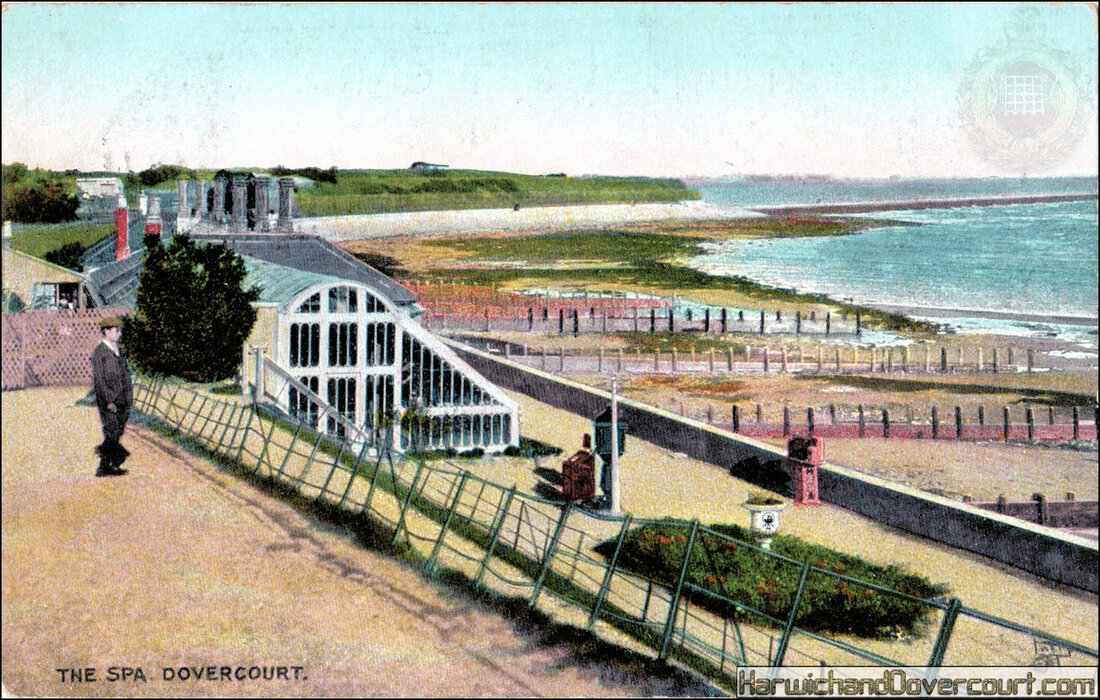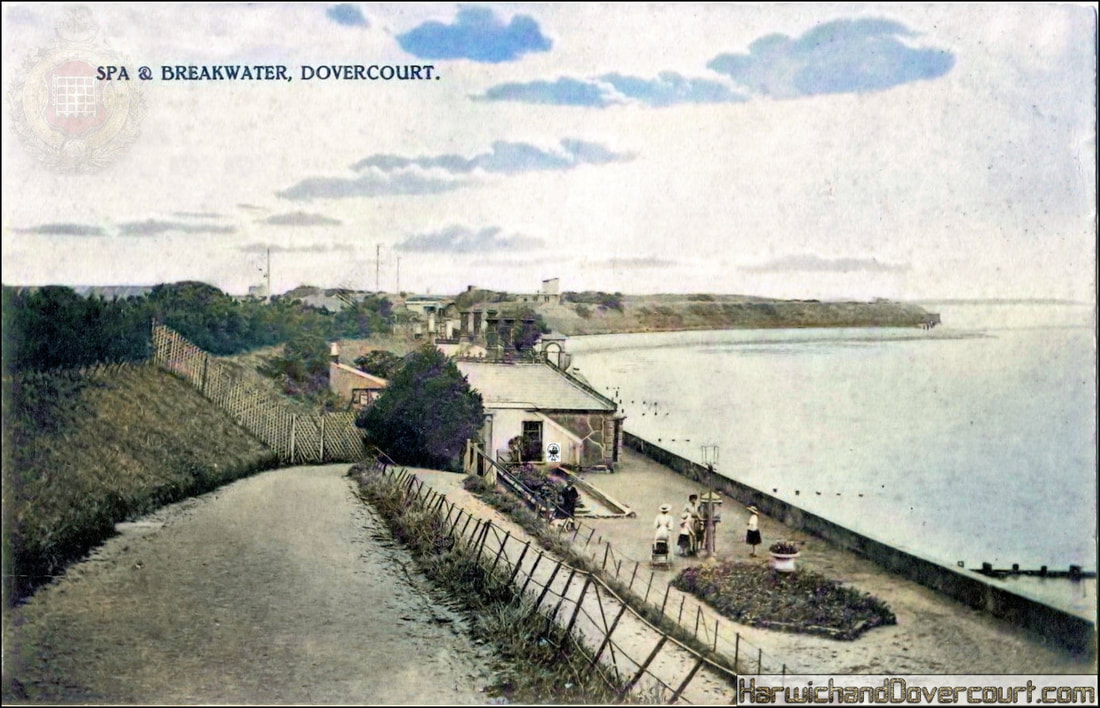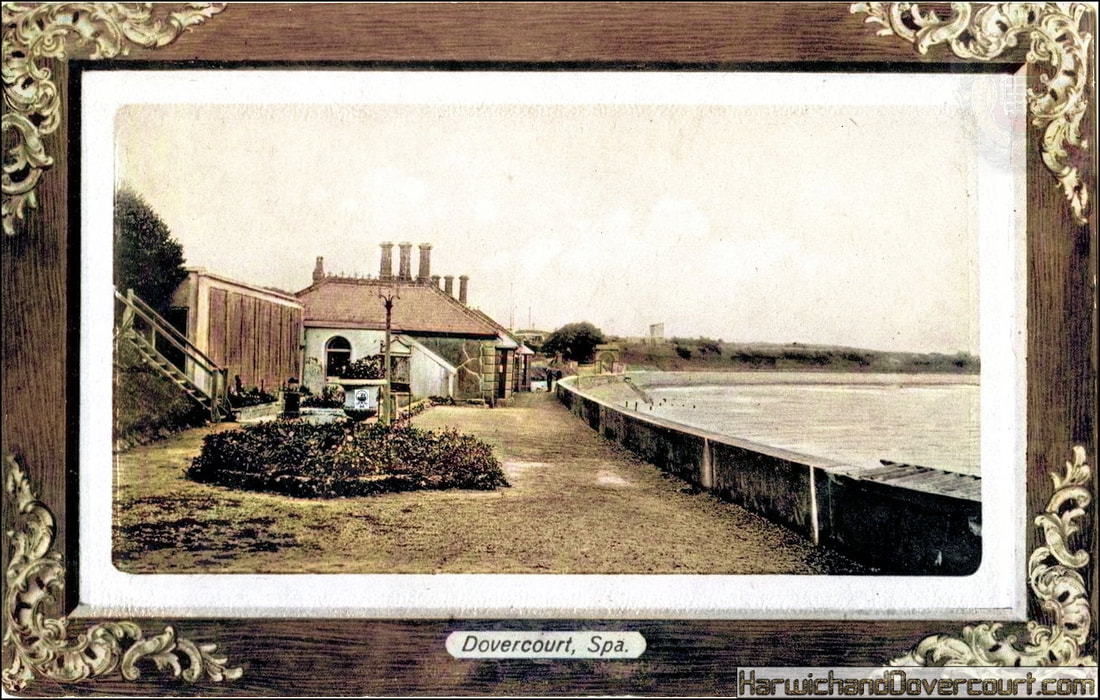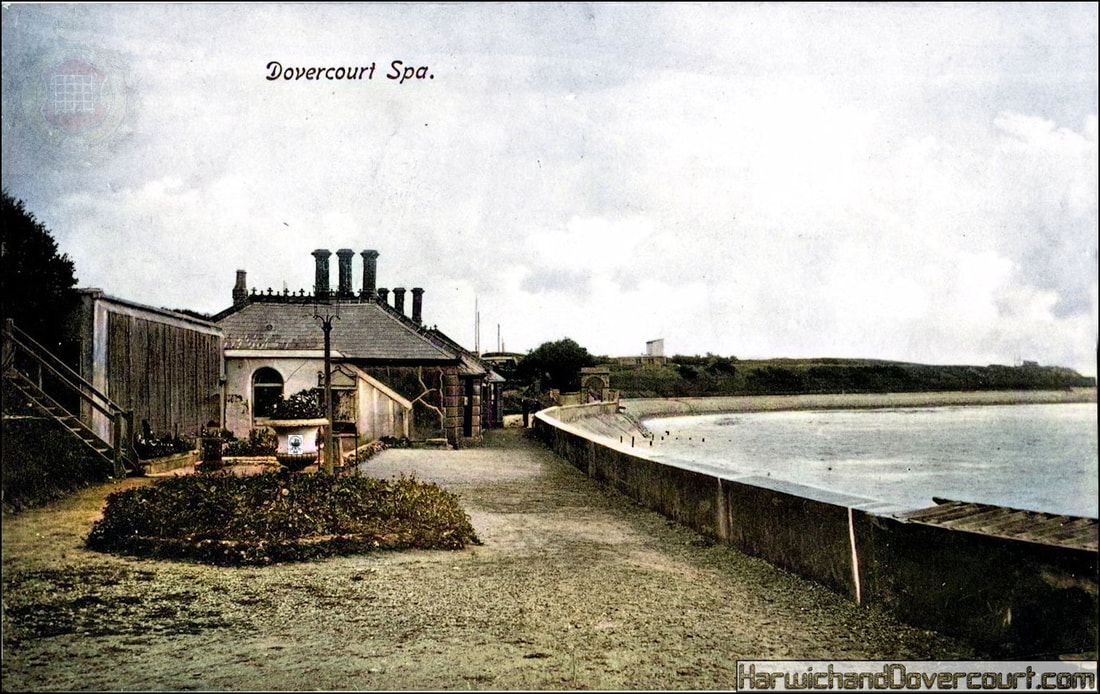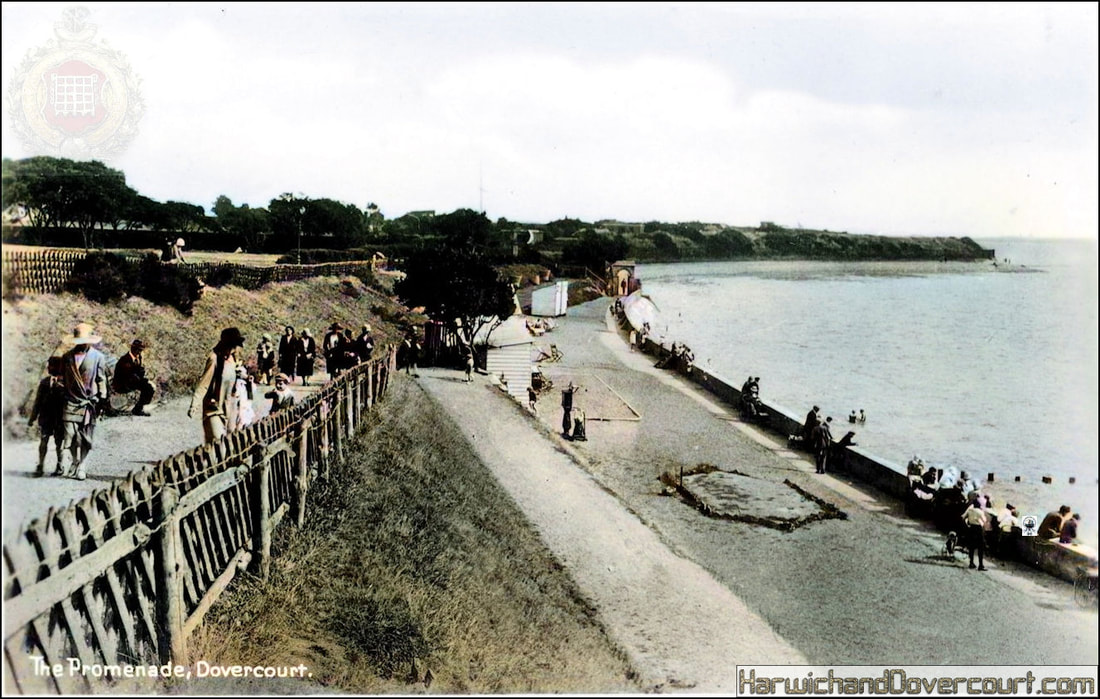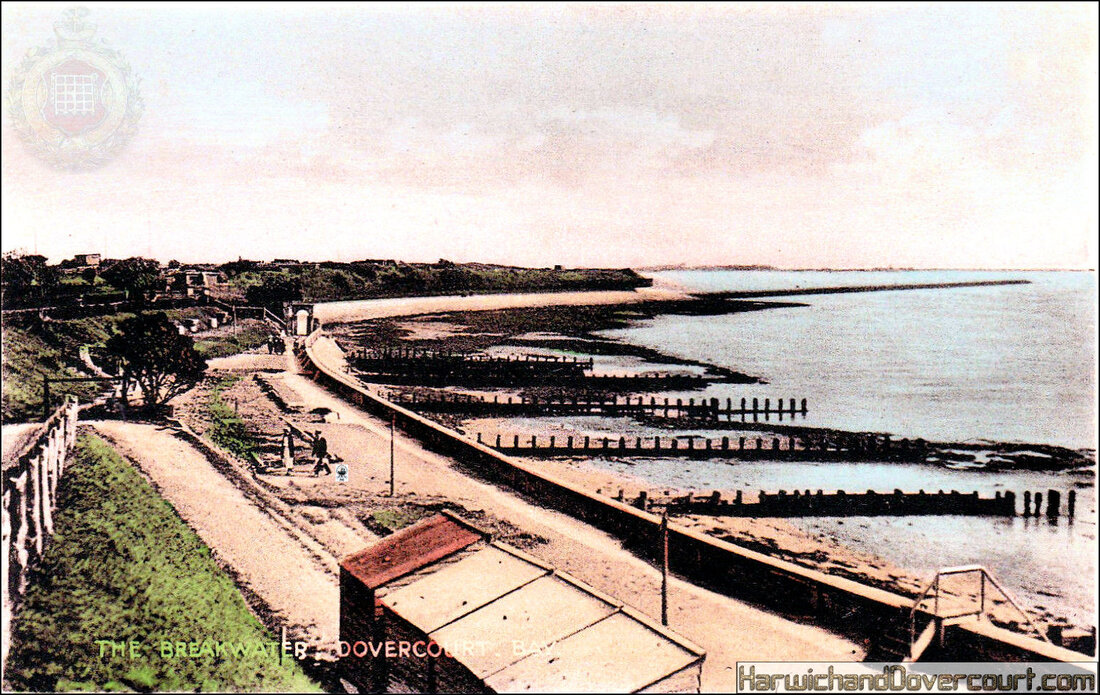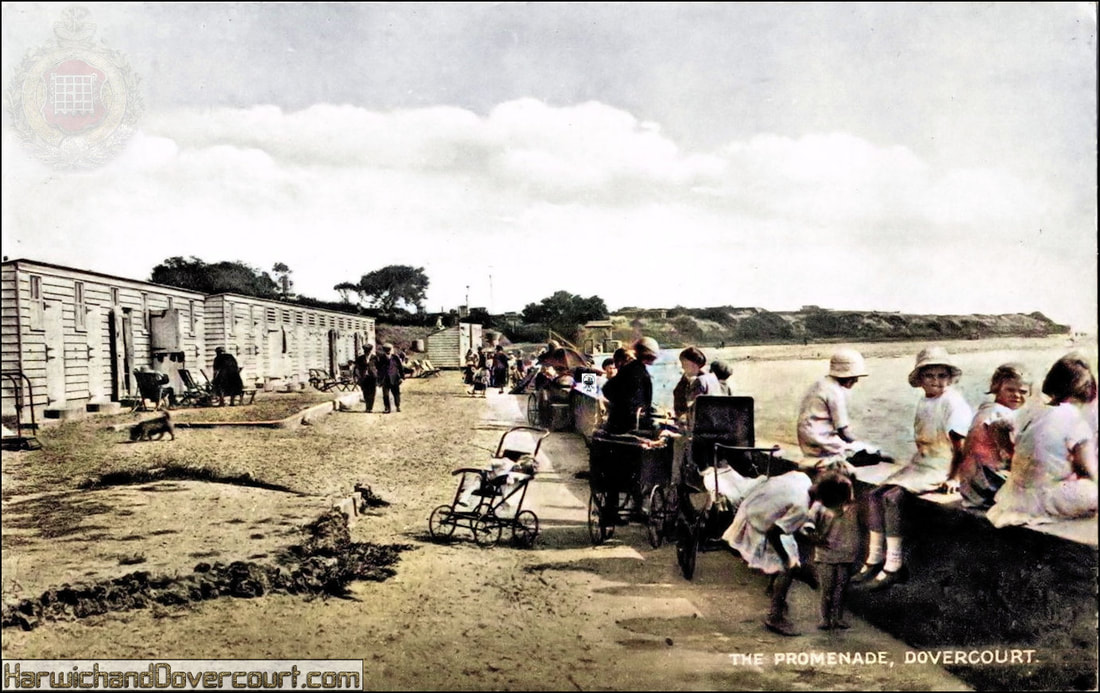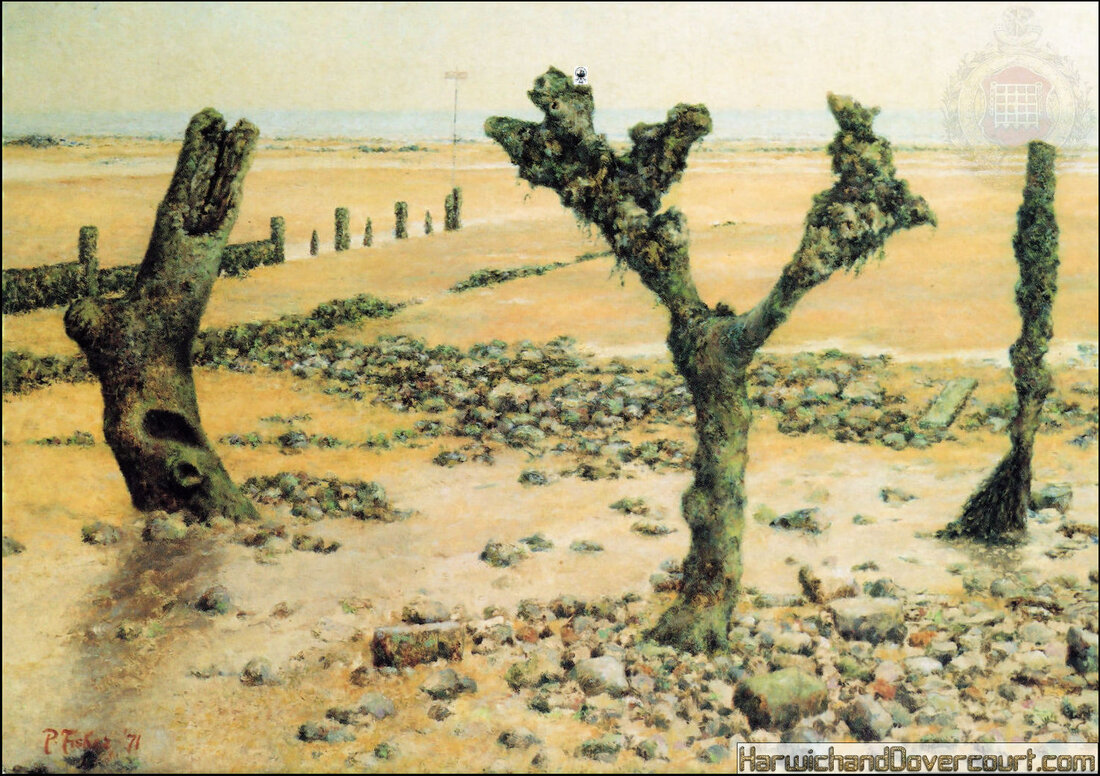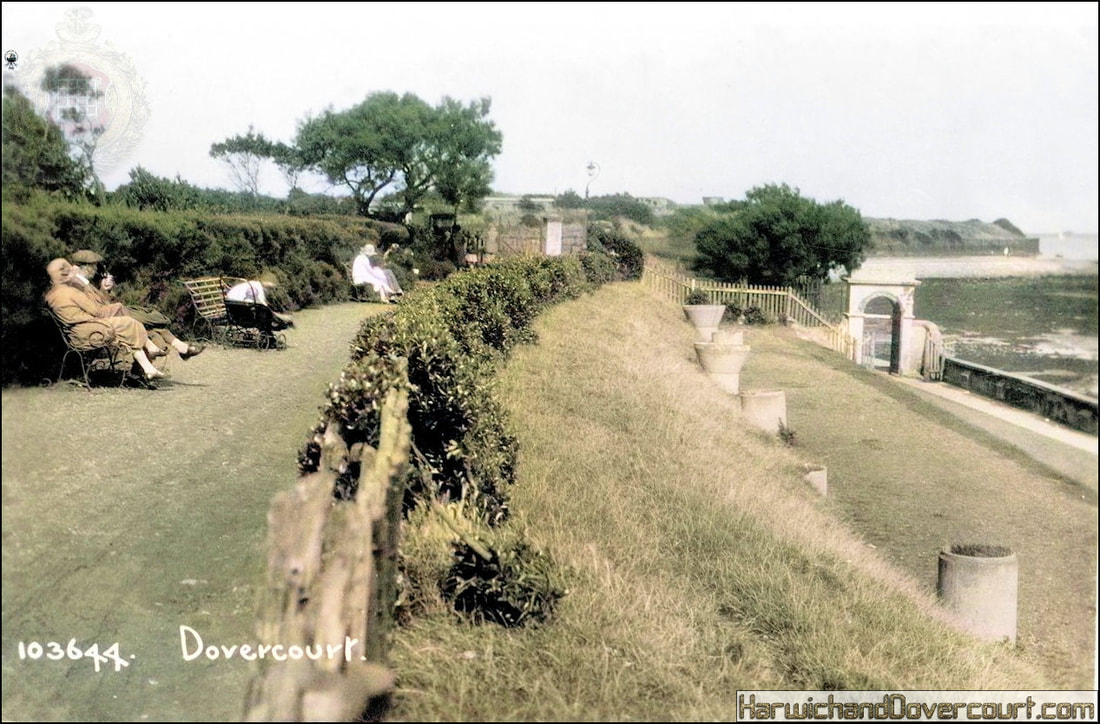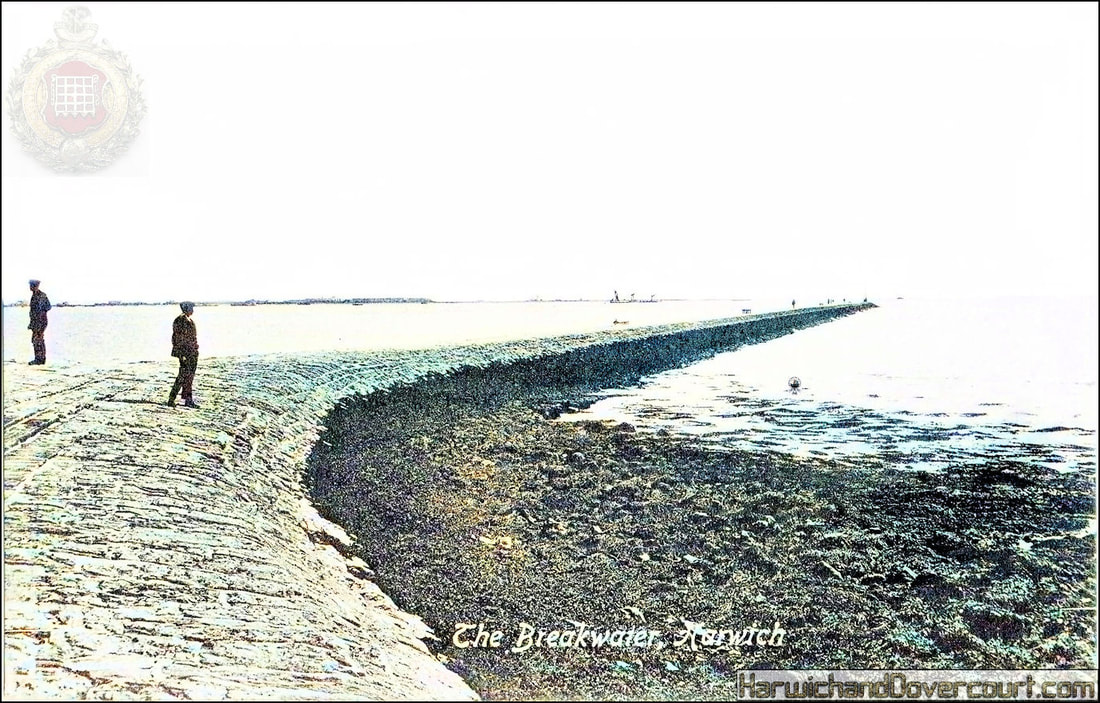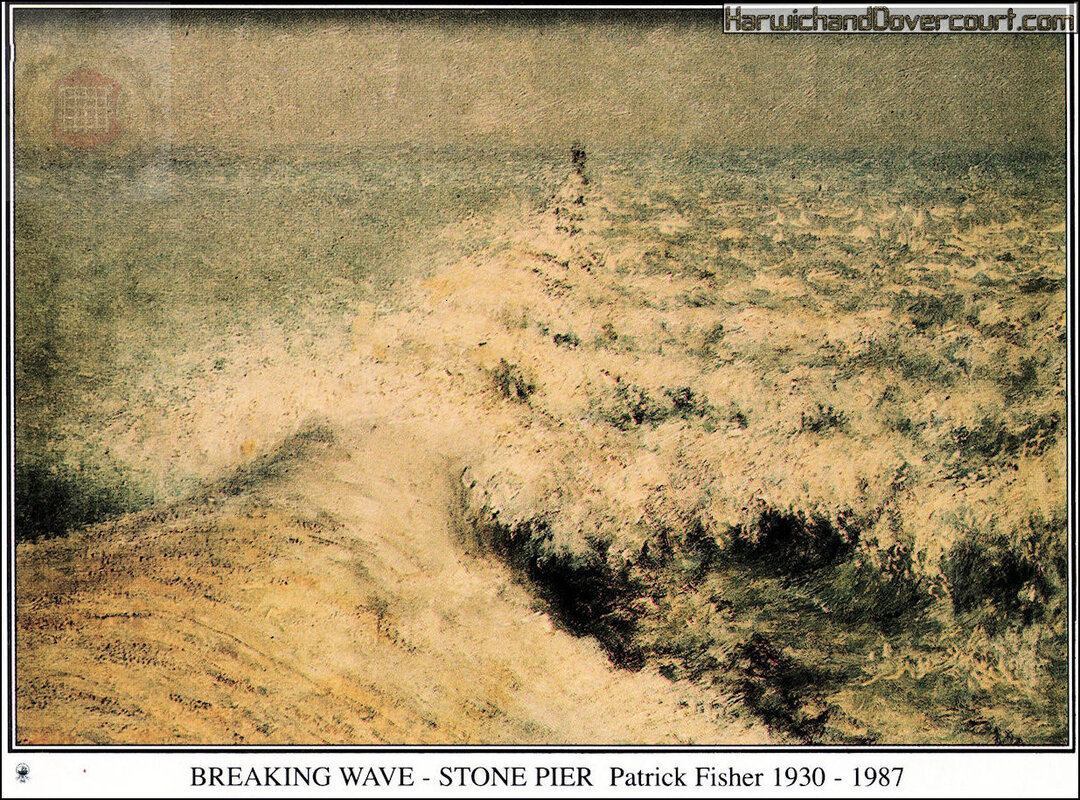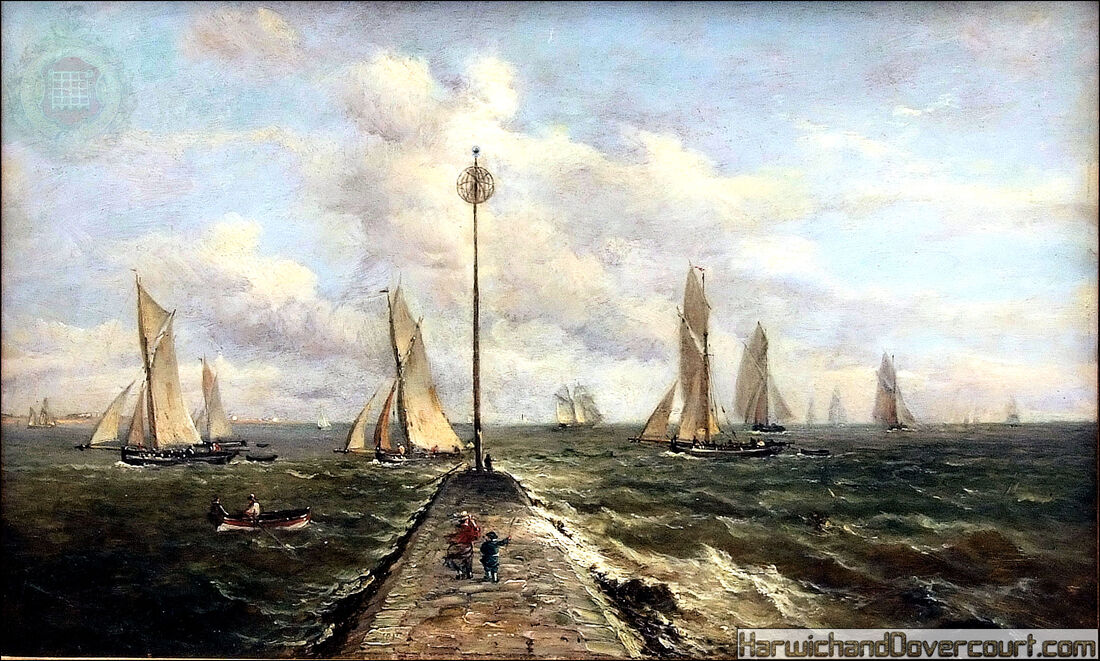Towards the Old Spa & Cliffe Gardens
01 V 5231 The Cliff Walk, Dovercourt (1960) Unknown FW
02 46 The Slopes, Dovercourt (1939) H&D C FW
The Old Spa
03 76586 The Spa, Dovercourt (1913) Bell's FW
#76586 The Spa, Dovercourt (1913, just prior to demolition) Bell's Photography
The spa at Dovercourt Cliffe Park was originally built in 1854, with funding from John Bagshawe (M.P. for Harwich) who resided at Cliffe House (originally within the Park itself). The spa itself was an ornamental brick building, in Tudor style, with a pump room, a saloon lounge, a library, a reading room with newspapers and a conservatory, combined with carefully laid out Italian gardens, some of which can be seen in these early postcards. There was even room for a small museum containing Roman remains and local fossils from the nearby cliffs. However the poor quality of the water and diminishing interest in smaller spas, led to its demolition shortly after the outbreak of world war one around 1915/16.
The spa at Dovercourt Cliffe Park was originally built in 1854, with funding from John Bagshawe (M.P. for Harwich) who resided at Cliffe House (originally within the Park itself). The spa itself was an ornamental brick building, in Tudor style, with a pump room, a saloon lounge, a library, a reading room with newspapers and a conservatory, combined with carefully laid out Italian gardens, some of which can be seen in these early postcards. There was even room for a small museum containing Roman remains and local fossils from the nearby cliffs. However the poor quality of the water and diminishing interest in smaller spas, led to its demolition shortly after the outbreak of world war one around 1915/16.
An interesting article written about the Spa in 1870
MINERAL WATERS AND MEDICINAL SPRINGS OF ESSEX
It has often been stated that this spring is that which was utilised in the establishment of Dovercourt Spa, but this seems
not to have been the case. All the old writers who refer to the spring in question speak of it as yielding excellent drinking
water; which would not have been the case had it had medicinal properties.
The establishment of Dovercourt Spa was part of the scheme of the late Mr. John Bagshawe, M.P., of Cliff House, Dover-
court, for the development of Dovercourt as a seaside resort, about the year 1852; and the spring utilised appears to have been
one discovered at that time.
In 1874, the spa was spoken as " a chalybeate spring, in great repute, possessing medicinal properties similar to
the waters of Tunbridge Wells. The Spa-House, first opened to visitors on the 28th August 1854, is a neat brick building in the Tudor Style, and consists of a pump-room, saloon, library, and conservatory.
In the pump-room and library, large bay windows look immediately over the sea. The library, in addition to a
good supply of books and papers, contains many cases of fossils peculiar to the neighbourhood : also a large collection of Roman Antiquities."
The spa has continued to exist ever since the date in question, and still does so. The fossils and the Roman antiquities are
no longer preserved in the Spa House, but the library and news-rooms are maintained and water is still sold regularly.
MINERAL WATERS AND MEDICINAL SPRINGS OF ESSEX
It has often been stated that this spring is that which was utilised in the establishment of Dovercourt Spa, but this seems
not to have been the case. All the old writers who refer to the spring in question speak of it as yielding excellent drinking
water; which would not have been the case had it had medicinal properties.
The establishment of Dovercourt Spa was part of the scheme of the late Mr. John Bagshawe, M.P., of Cliff House, Dover-
court, for the development of Dovercourt as a seaside resort, about the year 1852; and the spring utilised appears to have been
one discovered at that time.
In 1874, the spa was spoken as " a chalybeate spring, in great repute, possessing medicinal properties similar to
the waters of Tunbridge Wells. The Spa-House, first opened to visitors on the 28th August 1854, is a neat brick building in the Tudor Style, and consists of a pump-room, saloon, library, and conservatory.
In the pump-room and library, large bay windows look immediately over the sea. The library, in addition to a
good supply of books and papers, contains many cases of fossils peculiar to the neighbourhood : also a large collection of Roman Antiquities."
The spa has continued to exist ever since the date in question, and still does so. The fossils and the Roman antiquities are
no longer preserved in the Spa House, but the library and news-rooms are maintained and water is still sold regularly.
04 The Spa, Dovercourt (1908) H&D FW
05 4193 Tuck's Cromette. The Spa, Dovercourt (1906) FW
06 G 1778-80 G6850 14 Spa & Breakwater, Dovercourt (1914) FW
07 71158 The Spa, Dovercourt (1912) by Valentines FW
08 12 50187 Dovercourt Spa (1912) H&D FW
09 13 8349 Dovercourt Spa (1913) FW
10 Dovercourt Spa Ticket (1912) H&D FW
11 The Promenade, Dovercourt (1928) FW
12 4898 The Spa, Dovercourt (1939) H.Coates FW
13 The Breakwater, Dovercourt (1928) H&D FW
14 5139 The Spa, Dovercourt (1948) English Series FW
15 120858, Dovercourt Bay. (1929) Bell's Publishing FW
16 The Promenade, Dovercourt (1924) H&D FW
17 Ancient Trees by Patrick Fisher (1971) H&D FW
"Ancient Trees", Dovercourt Beach (near the park) in 1971, PJF cards
These "Ancient Trees" near Dovercourt Park Beach, were captured by Patrick Fisher local teacher and artist in 1971. His nephew Peter Hall, also a great artist has painted many local scenes as well.
They mark the loss of the original coastline from erosion and have been mentioned in early 17th Century texts such as "The History and Antiquities of Harwich and Dovercourt" By Silas Taylor, Samuel Dale 1730.
For more information see:- http://www.harwich.net/pjf.htm
These "Ancient Trees" near Dovercourt Park Beach, were captured by Patrick Fisher local teacher and artist in 1971. His nephew Peter Hall, also a great artist has painted many local scenes as well.
They mark the loss of the original coastline from erosion and have been mentioned in early 17th Century texts such as "The History and Antiquities of Harwich and Dovercourt" By Silas Taylor, Samuel Dale 1730.
For more information see:- http://www.harwich.net/pjf.htm
